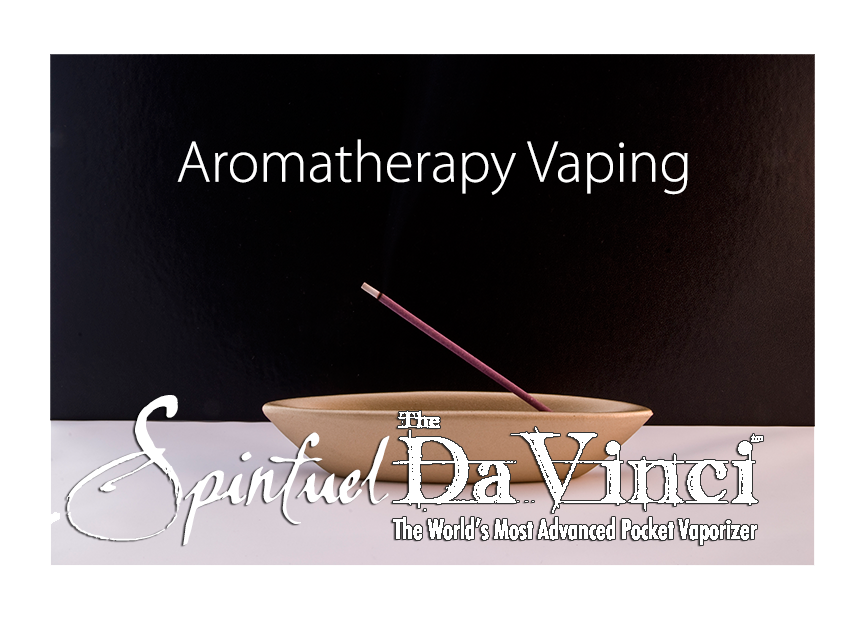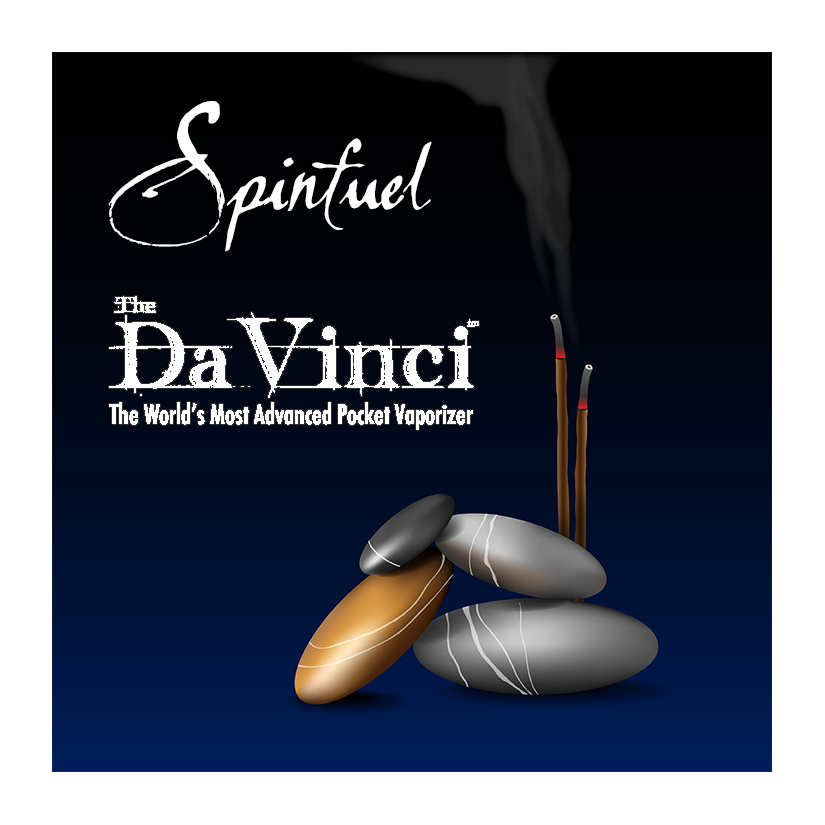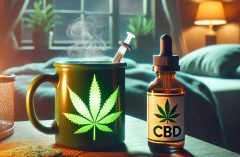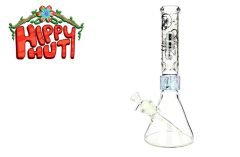Table of Contents [show]
Aromatherapy Vaping – A History & Practical Application
This Article was written and submitted by DaVinci Vaporizer.
Aromatherapy is a holistic practice of consuming or administering essential oils and other organic plant materials in an effort to improve a person’s health, mood, or general life experience. Many people consider this holistic practice to be a placebo effect or wishful thinking however scientific evidence suggests that there may be more to it. The inhalation of certain essential oils and herbs is believed to stimulate the part of the brain that is connected to smell; a signal is sent to the limbic system of the brain that controls emotions. This causes a chemical reaction, which can make a person feel relaxed, calm, or even stimulated.
The practice of aromatherapy has been around since ancient times. While the craft did not earn the name aromatherapy until the 1920’s, it has been well documented since the beginning of recorded history. If you visit a library or search online you will easily find endless references to the benefits and practice of aromatherapy. Many of those references are in fact found in the journals and  teachings of some of the most respected medical professionals in both modern and ancient history.
teachings of some of the most respected medical professionals in both modern and ancient history.
Let’s take a quick look at some of the most prominent proponents of aromatherapy throughout history!
One of the earliest recorded mentions of aromatherapy comes from Ancient Egypt in 2650-2575 BC as Frankincense, myrrh, galbanum, cinnamon, cedarwood, juniper berry and spikenard were some of their most valuable commodities due to their extensive usage in the ancient egyptian rituals, perfumes, and medicine.
Moving forward in time to around 300 BC the ancient greek physician Asclepius who was later deified in greek mythology as the god of healing used herbal blends in combination with surgery to produce previously unrivaled results in his field. His impact was so great that after his death the Greeks erected thousands of lavish healing temples in his honor.
Meanwhile around the same time in 460-377 BC Hippocrates who is considered still today to be the father of modern medicine was an avid aromatherapy practitioner. In addition to other natural treatments Hippocrates used herbs such as fennel, parsley, hypericum, and valerian to treat a variety of ailments. During his lifetime Hippocrates analyzed and cataloged over 200 different botanical blends.
The military physician Dioscorides marched with the Greek armies all over europe between 40-90 AD cataloging the plants he found along the way and their medicinal benefits. The results of his journey was a 5 volume series called De Materia Medica which is also known as Herbarius. This series was the first systematic pharmacopoeia and contained over 1000 botanical medications and described in detail at least 600 different plants and aromatics. His work was so impressive that he was bestowed with the title Father Of Modern Medicine.
In more modern times we came upon the name for aromatherapy itself. A French doctor named René-Maurice Gattefossé who studied essential oils extensively while working at his family’s perfumery discovered the incredible healing properties of lavender after suffering a severe burn. This led him to write the groundbreaking Aromathérapie: Les Huiles essentielles hormones vegetales in 1937.
Today the research of and practice of aromatherapy continues in the research of our medical professionals, in the products we buy, and in the lifestyles we choose. However with this lush history and the benefits of modern technology we have discovered new ways of consuming our beloved herbs in safer and more convenient ways than ever.
Take a look around. Aromatherapy is more prevalent in your everyday life than you might realize. Everything from your Citrus Energy body wash to your chamomile tea at night is based on the principles of aromatherapy. It is not uncommon to see these aromatics being used topically or even directly ingested however.
Aromatherapy Vaping
Choosing how to consume aromatics can be tricky. Some of the common methods of consumption are applying topically, ingestion, and smoking. However, in the past few years the practice of vaporizing aromatics has become preferable to smoking them for many people. Before you choose which method you are going to use to practice aromatherapy you certainly want to do lots of research as each herb and essential oils has it’s own unique properties, safety measures, and preferred delivery methods.
 People have been smoking herbal blends for as long as we as a society can recall. The problem with smoking any organic material is that the combustion process is incredibly inefficient. This inefficiency can create a variety of issues ranging from health issues to other undesirable side effects for example odor or teeth staining. Thanks to vaporizers we can now enjoy the same blends with significantly less risk for detrimental side effects.
People have been smoking herbal blends for as long as we as a society can recall. The problem with smoking any organic material is that the combustion process is incredibly inefficient. This inefficiency can create a variety of issues ranging from health issues to other undesirable side effects for example odor or teeth staining. Thanks to vaporizers we can now enjoy the same blends with significantly less risk for detrimental side effects.
Vaporizing or vaping is a pretty simple process! In portable vaporizers a heating element inside of the unit heats incoming air to a sufficient temperature to volatilize the active compounds so that when the user inhales the air is drawn through your materials and the user inhales a vapor that was created without burning the material itself. This method is not only more efficient but also significantly lowers the health risks associated with smoking!
We mentioned that there are tons of herbs you can vape so to serve as a guide we’ve listed a few here along with their benefits and recommended temperatures! Be sure to use organic herbs for vaping so you can be sure that you are free from pesticides and other potentially harmful chemicals.
Kava Kava
Recommended Vaporization Temperature: 347°F/392°F
Kava Kava is best known for helping people shed away the stress and anxiety and may even improve insomnia.
Green Tea
Recommended Vaporization Temperature: 374°F/190°C
Green Tea is well known for it’s healing properties and incredible antioxidant properties. It’s commonly vaped to aid in pain management, digestion, and depression.
Lavender
Recommended Vaporization Temperature: 266°F/130°C
Lavender is a powerful antiseptic and antibacterial that also stimulates blood flow. It’s commonly used to promote healing and for it’s delightfully relaxing scent.
Peppermint
Recommended Vaporization Temperature: 331°F/166°C
Peppermint has more benefits than one could quickly list! It helps to relieve muscle spasms, it’s a powerful antiseptic, and it’s well know for helping to alleviate stomach upset and headaches.
Chamomile
Recommended Vaporization Temperature: 374°F/190°C
Chamomile is known as the relaxing herb. This herb is widely used to relieve irritability, nervousness, as an antispasmodic, and more generally just to relax.
You wouldn’t think that the vaporizer you choose would make a huge difference in the process but it definitely does! Vaporizers have been around for decades now and come in a variety of shapes and sizes. The types range from small pen style vapes to huge table top units. The sweet spot right in the middle of that are the small handheld vaporizers like the devices made by new partner DaVinci. The first of many Vaporizer reviews we’ll begin publishing will by the DaVinci Ascent. DiVinci will be helping Spinfuel expand our Vaping Resources with brand new, exclusive content created just for Spinfuel readers.
When you are searching for a vaporizer you want to look for certain features that will dramatically improve your experience. The biggest issue at hand when choosing your vaporizer is temperature control. Precision temperature control is an important feature because many herbal compounds have different points at which they release their compounds and you want to set your temperature just right to get the most out of your experience. We also really prefer all glass air paths! The flavor is much cleaner with all glass and you don’t risk inhaling any chemical that may have leached out from the plastics or glues used to manufacture lesser units. You’ll likely also want to consider the more practical side of things such as a durable device that can withstand handling and a long battery life. While there are many options out there we here at Spinfuel believe the DaVinci Ascent is the direction we would recommend every time! Made with dry herb vaporization in mind the DaVinci Ascent includes all of the above features and many more to ensure that you get the most out of your aromatherapy experience.
That sums up our special presentation on the history of aromatherapy and how to get the most out of it. We sincerely hope you enjoyed this article and that you get the chance to experience the incredible powers of vaporizing herbs with one of these special Vaporizers! We know you will be nothing less than amazed!




